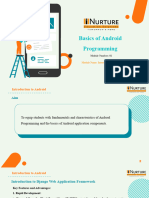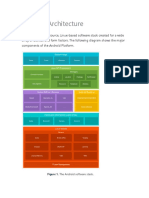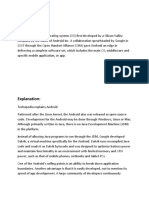0% found this document useful (0 votes)
2 views10 pagesHow Android Works
Android is an open-source mobile operating system developed by Google, designed for touch-screen devices and powering billions globally. Its architecture consists of several layers, including the Linux Kernel, Hardware Abstraction Layer, Android Runtime, Native C/C++ Libraries, Java API Framework, and System Apps. Android manages app execution through the Activity Manager and ensures security through updates, permissions, and encryption.
Uploaded by
Hssain AitkadirCopyright
© © All Rights Reserved
We take content rights seriously. If you suspect this is your content, claim it here.
Available Formats
Download as PDF, TXT or read online on Scribd
0% found this document useful (0 votes)
2 views10 pagesHow Android Works
Android is an open-source mobile operating system developed by Google, designed for touch-screen devices and powering billions globally. Its architecture consists of several layers, including the Linux Kernel, Hardware Abstraction Layer, Android Runtime, Native C/C++ Libraries, Java API Framework, and System Apps. Android manages app execution through the Activity Manager and ensures security through updates, permissions, and encryption.
Uploaded by
Hssain AitkadirCopyright
© © All Rights Reserved
We take content rights seriously. If you suspect this is your content, claim it here.
Available Formats
Download as PDF, TXT or read online on Scribd
/ 10
































































